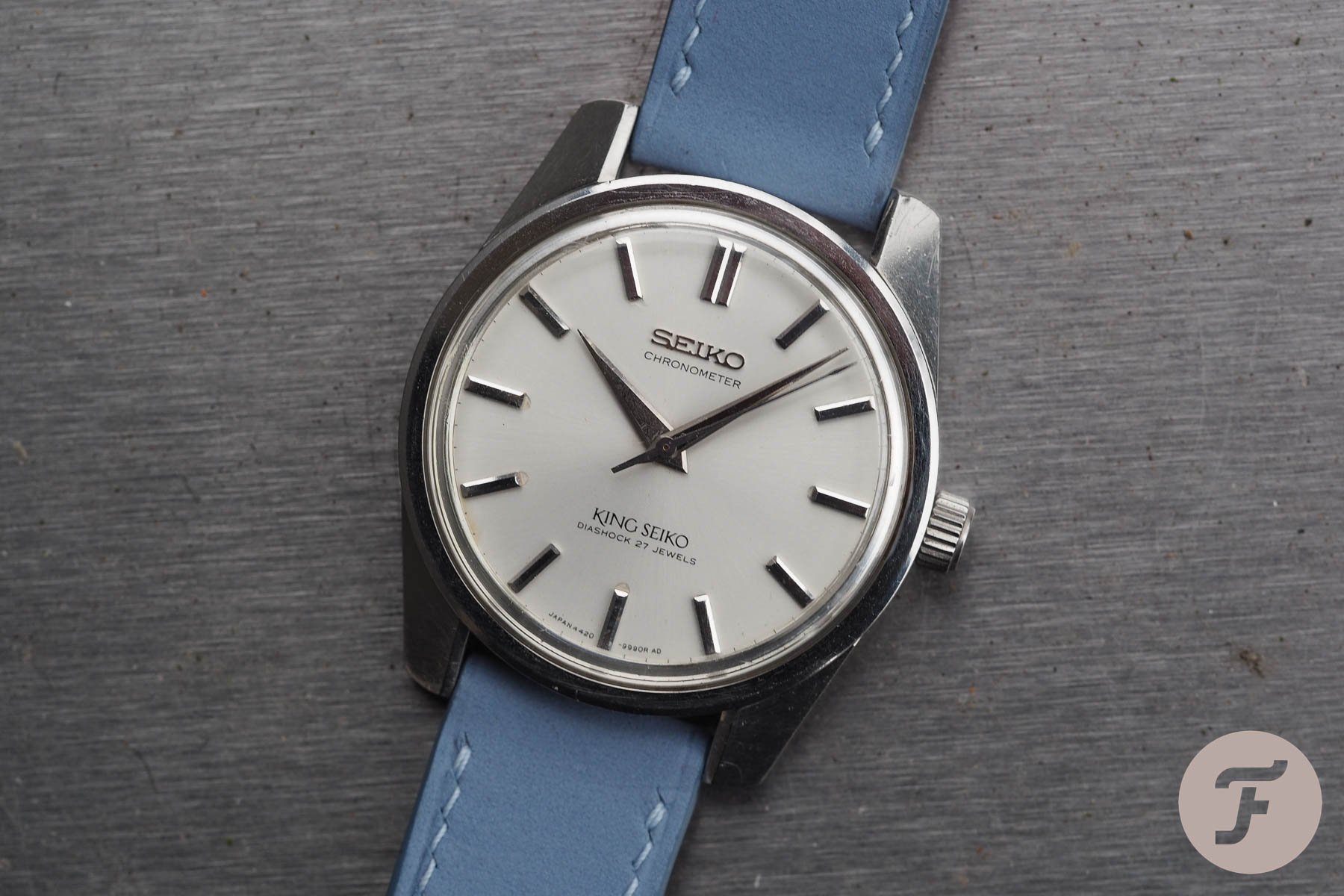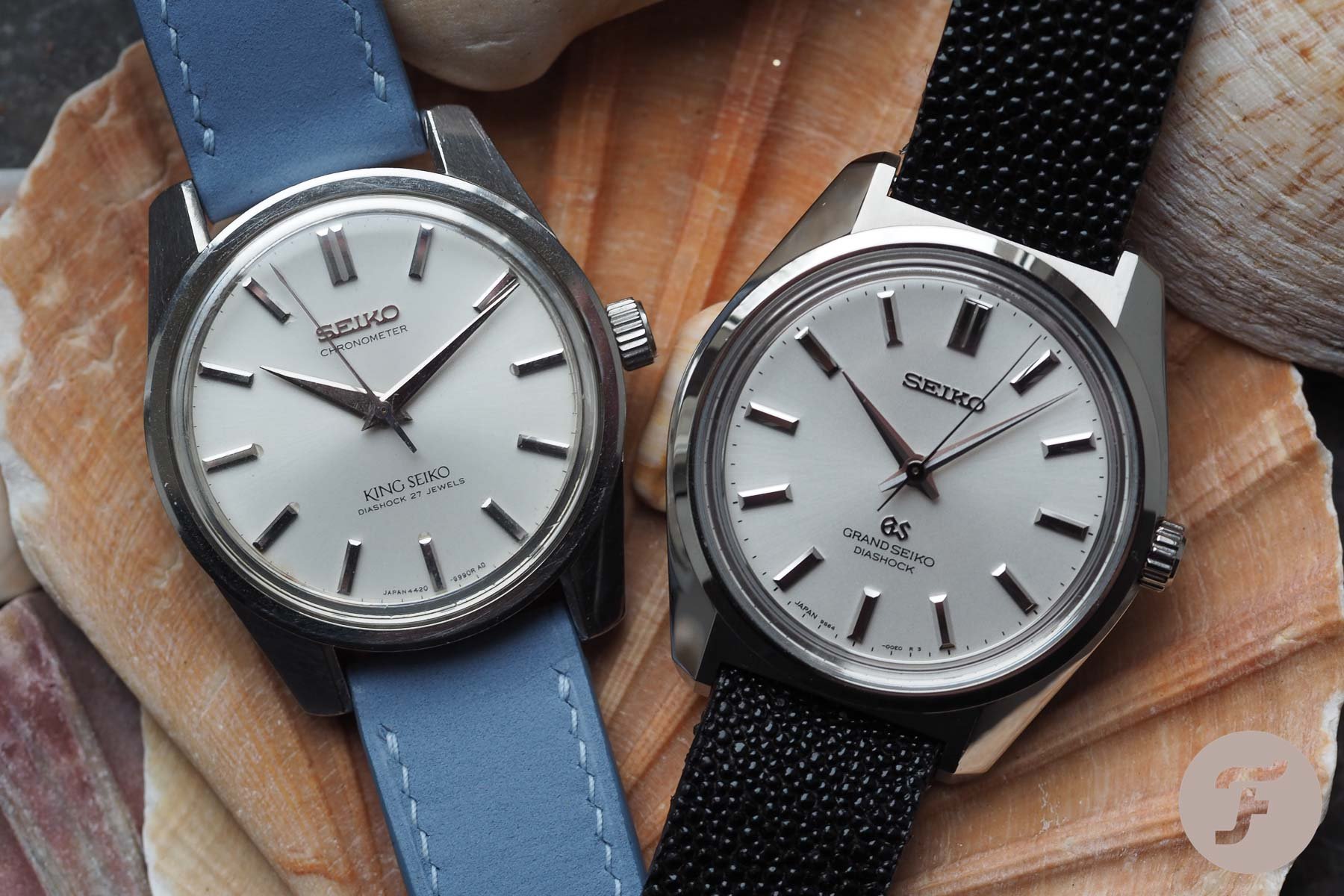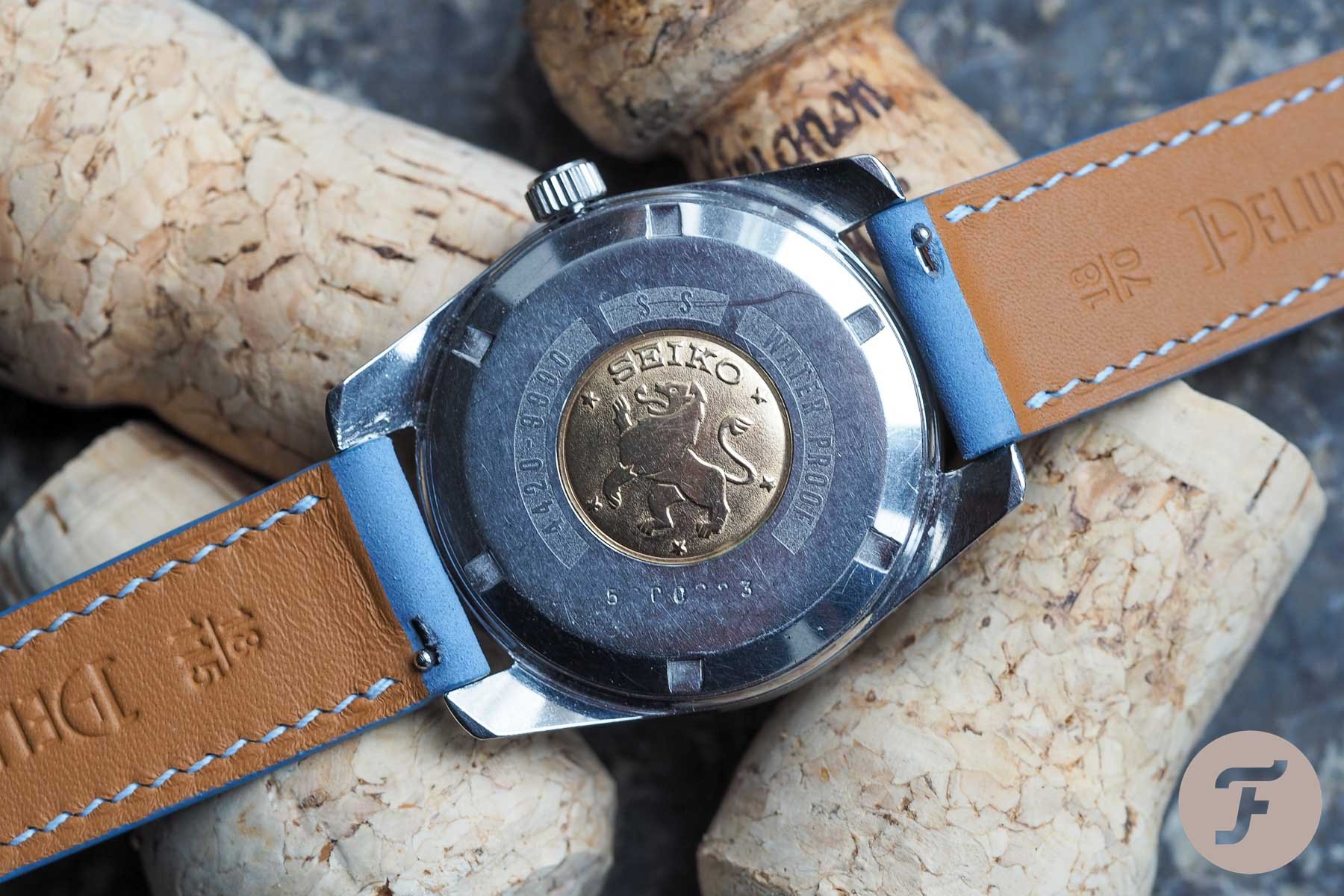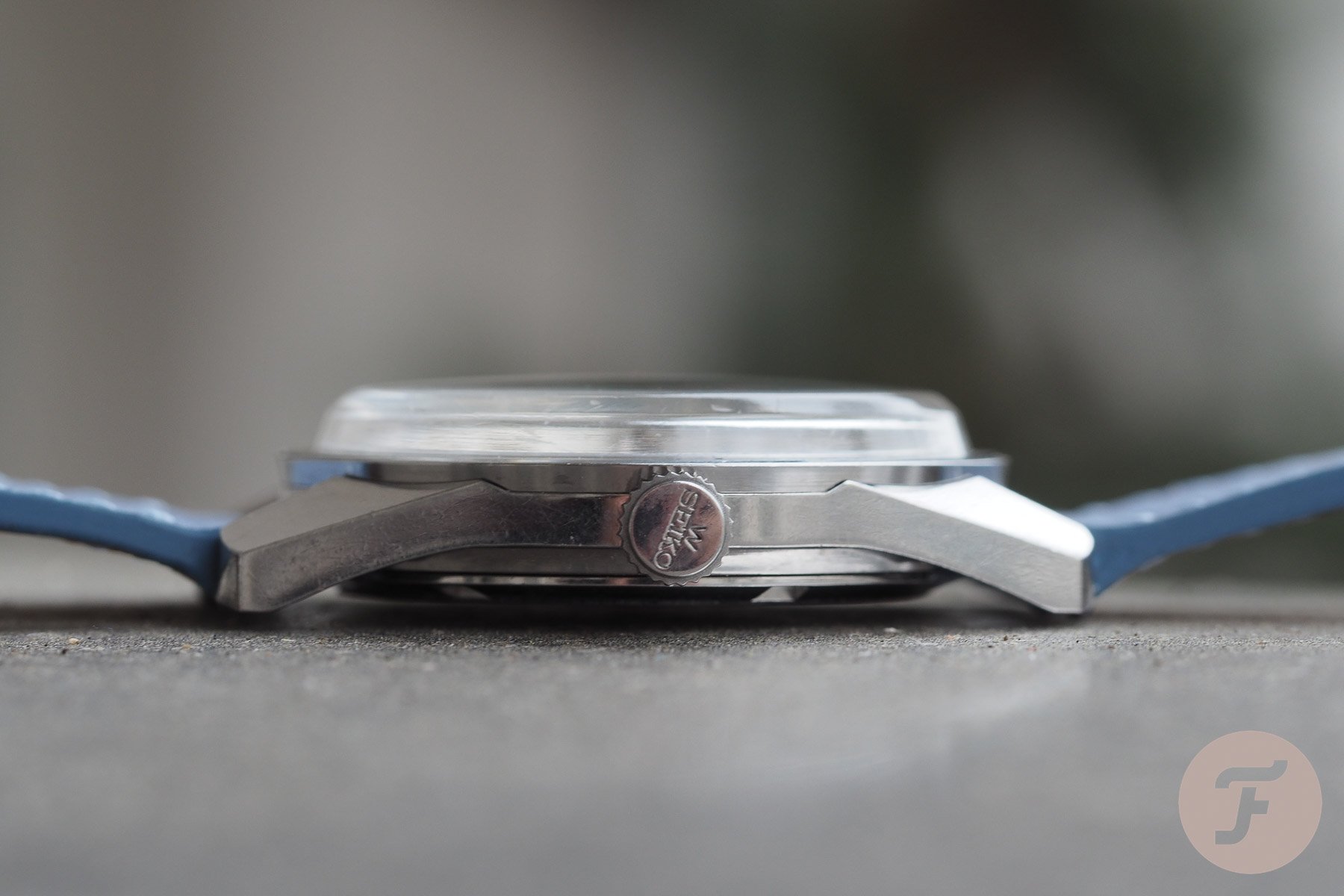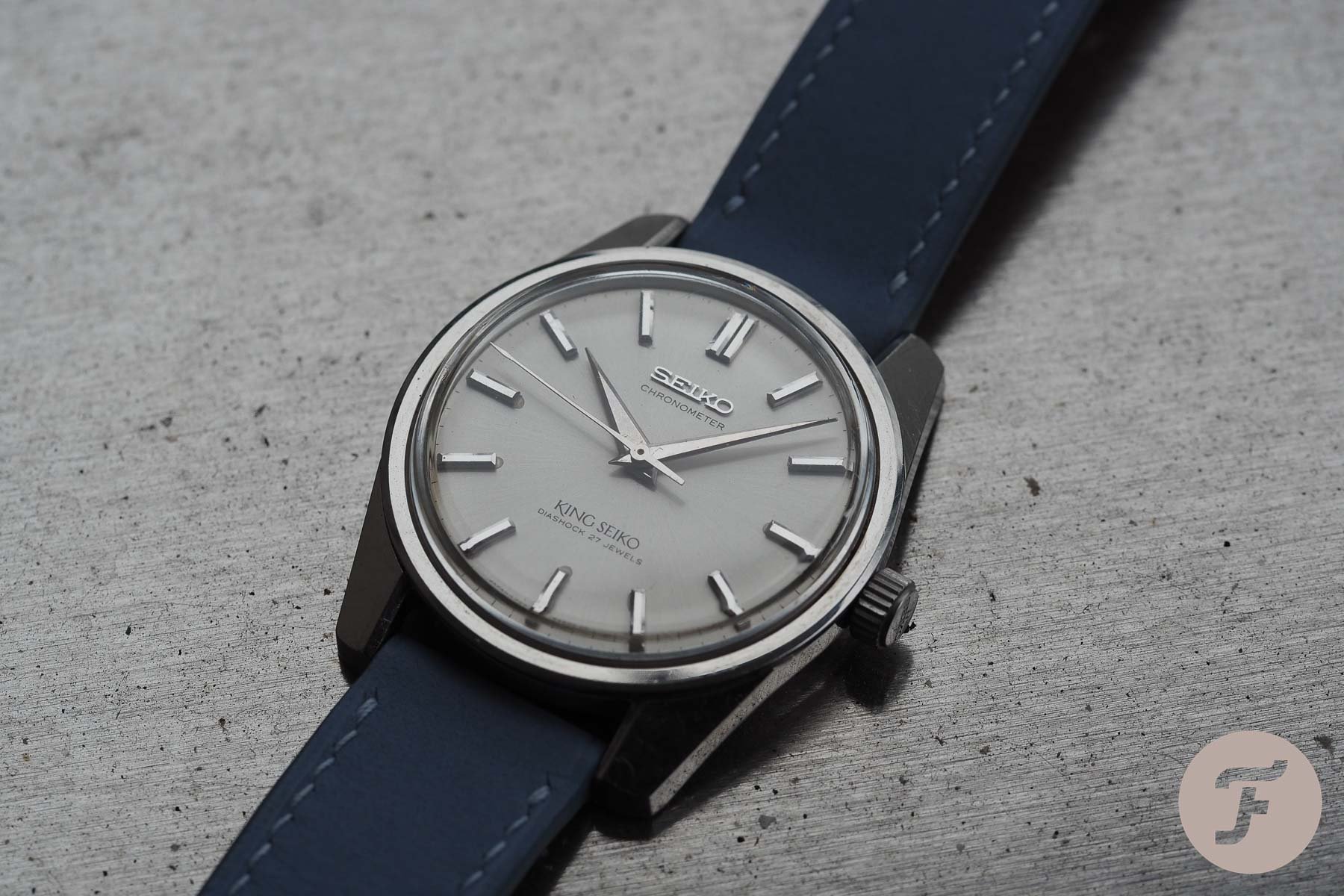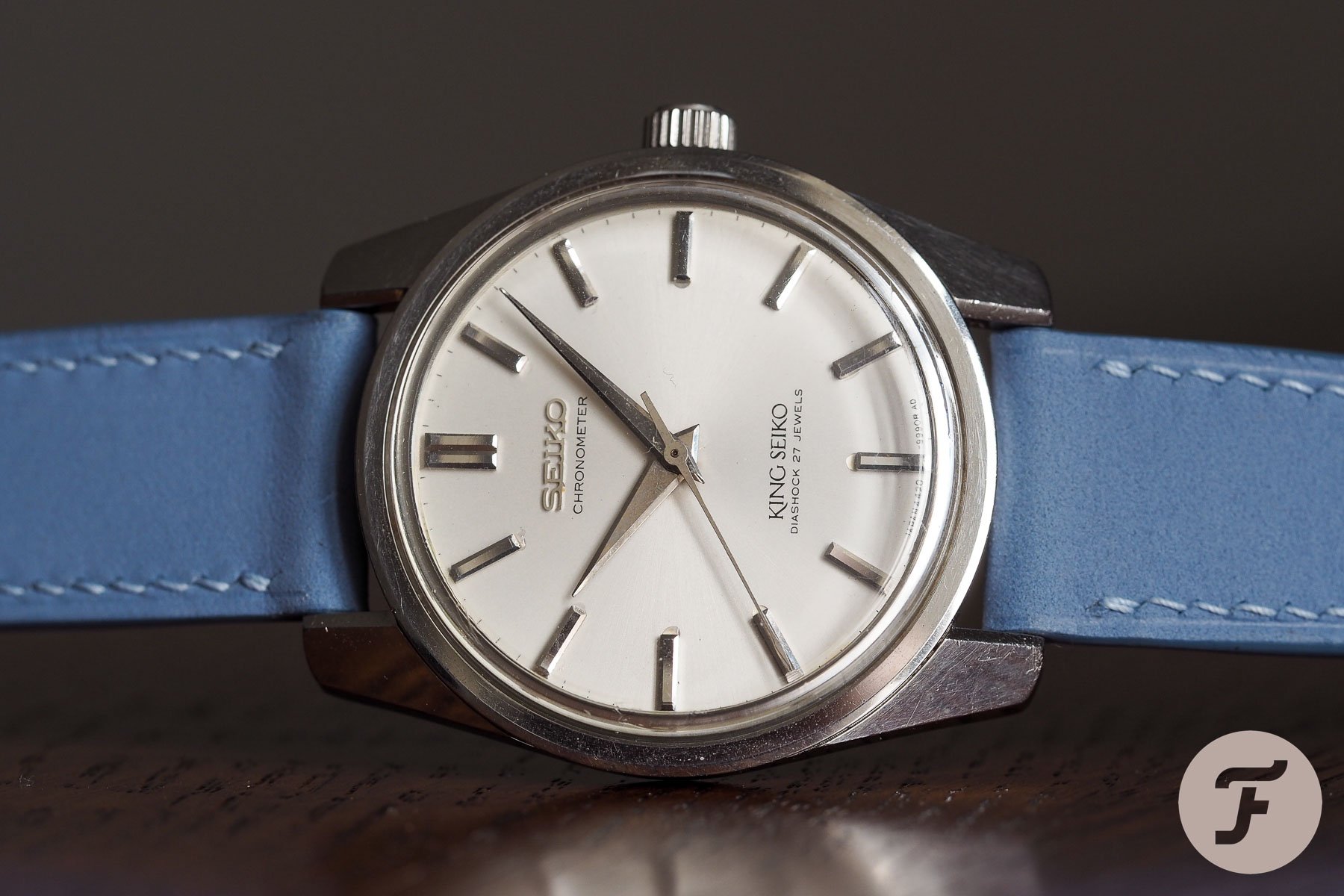The Vintage King Seiko 4420-9990 Is A Grand Seiko In Disguise
We’re back with another review of a vintage Japanese watch, and this time, the King Seiko 4420-9990 is in focus. This is a neat reference, and I’m happy to share two examples that, like Voltron, will hopefully come together to make one lovely example. Or will they?
In 2022, I decided it was finally time to (re)take a look at vintage King and Grand Seiko. For whatever reason, I had kept my collection to one piece after picking up the 2013 44GS reissue. That watch is nothing to sneeze at, but as the resident vintage Seiko kook here at Fratello, it was high time to turn my attention to the good stuff. Since then, I’ve been busy. I purchased and wrote about the lovely King Seiko 44-9990 and Grand Seiko 62GS. Recently, I have also added some other lovelies to the collection. Some are with me and some are still in their birthland. If articles on the 44GS, 57GS, and 46999 Liner Chronometer sound good, I promise that your patience will ultimately be rewarded. For now, though, let’s talk about the King Seiko 4420-9990.
The King Seiko 4420-9990
A proper truism about Seiko back in the day is that the company was always meddling. The sheer number of year-over-year changes to the lineup during the ’60s and ’70s makes one think that tooling costs were nil. I mean, how the heck did Seiko ever fully recover some of these investments after such short production runs? Regardless of the dizzying changes, Seiko was about improvement, and perhaps this is why the updates were so frequent. The brand was also highly interested in equaling or bettering the Swiss. The King Seiko 4420-9990 is a prime example of that quest and also represents Seiko’s flippant nature when it came to introducing and canceling models within a very brief period.
When I began re-familiarizing myself with the ’60s King and Grand Seiko models, I set priorities. I tend to favor models without date functions and also those with manual-wind movements. This is why, aside from the 57GS I mentioned above, the future lineup of articles contains watches that are all eerily similar. It was during my studying that I came upon the King Seiko 4420-9990. The story of the watch is relatively brief, but it is interesting.
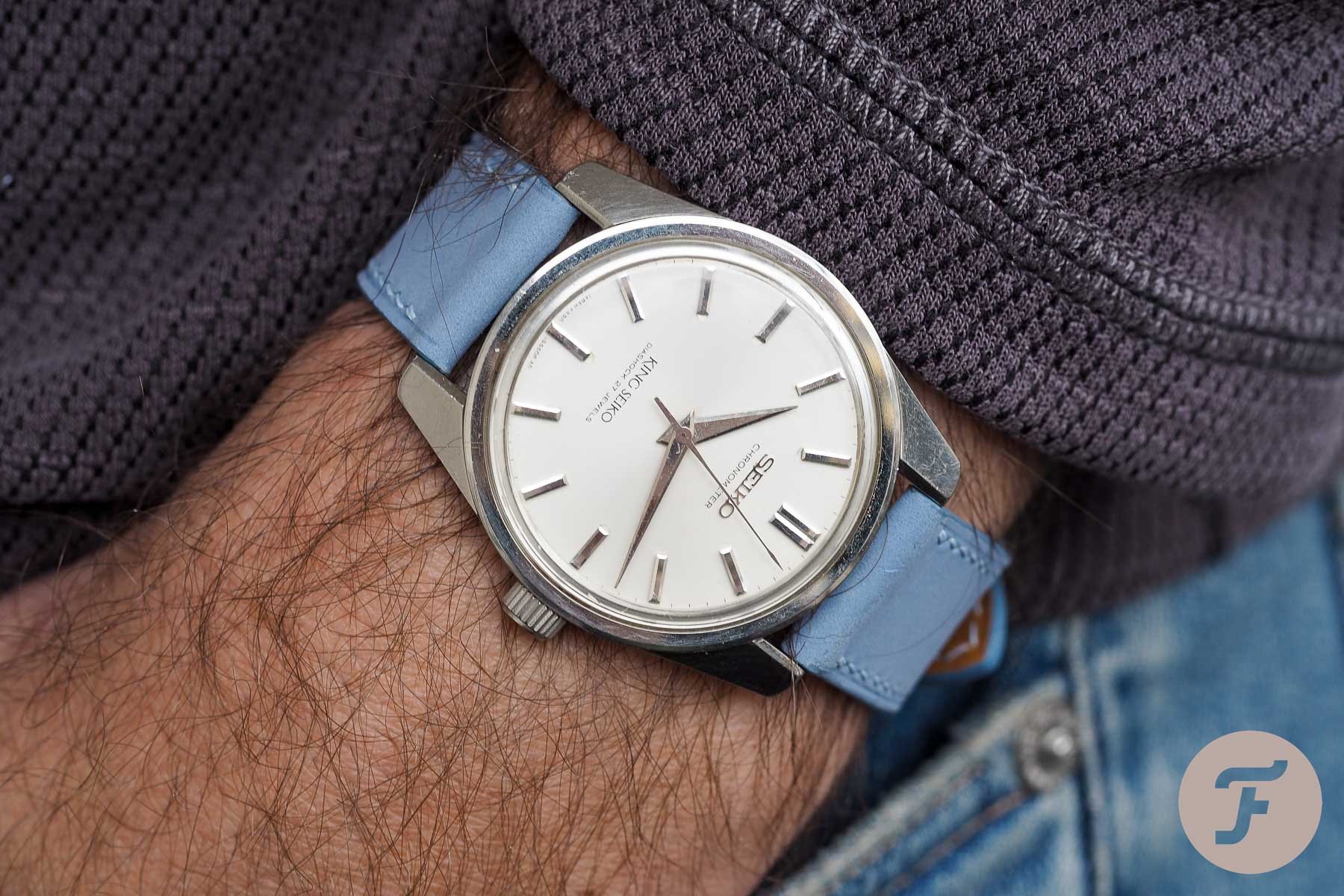
The backstory
It’s not surprising that Seiko had a lineup of King Seiko watches, but the nomenclature is somewhat beguiling. The 44-9990 that I recently reviewed first saw life in 1963 (it originally came out as the 44999) and was in production until 1968. Within this five-year window, the King Seiko 4420-9990 arrived in 1963 with its oddly similar reference number. It also had a 44-series movement but gained the 4420 caliber name along with two jewels and a chronometer certification. For reasons that we can (and will) speculate about, it disappeared suddenly in 1966.
If we recall the story of the Grand Seiko 62GS, it actually started life as a Seiko Seikomatic with a chronometer rating. At some point in 1966, though, it became a Grand Seiko (a more stringent spec than Chronometer) when the Swiss decided to make it impossible to use the “Chronometer” wording unless movements were sent to the European country for testing.
So if one watch survived the Chronometer wars and morphed into a Grand Seiko, why didn’t the steel King Seiko 4420-9990? I’m guessing that its demise was due to several reasons. First, automatics were all the rage, and I’m sure Seiko wanted to keep the Seikomatic alive in some format. Next, the Seikomatic came from the Seiko line. A King Seiko moving to become a Grand Seiko would have been awkward (it did happen, though, with a gold-capped version of this watch!). Finally (and likely the real reason for the death of the steel 4420-9990), Grand Seiko came out with its own model using the 4420 movements. This, folks, was the 44GS that, unsurprisingly, debuted in 1967.
The King Seiko 4420-9990 is the precursor to a Grand Seiko
So there we have it. Even though this is the King Seiko 4420-9990, it is actually the “origin story” for the Grand Seiko 4420-9000. The linkage isn’t overly obvious if we look at the King Seiko on its own. However, the relationship is obvious once we pair the King Seiko with the Grand Seiko 44GS. Today’s watch has a far simpler case due primarily to the lack of metal in the lug area. Still, this is not a boring design. Small chamfers are present that flow inwards towards the 18mm strap. Similarly, the outer top edges should be sharp — anything otherwise is a sign of over-polishing.
The King Seiko 4420-9990 checks in at 36.5mm in diameter and 42.7mm in length, but it looks large. Credit the chunky lugs and the sparse, wide-open dial. When we look at the dial, it’s fairly clear that we’re looking at a higher-end ’60s Seiko. All the trademarks are here, such as the silvery dial, applied logo, highly polished applied indices, and polished dagger hands. Take special note of the seconds hand with its subtle arrowhead tip. The King Seiko logo is loud and proud above 6 o’clock and exhibits the brand’s mastery of blending several different fonts on one dial. All told, this case with its flowing, sharp lugs and the clean, dateless dial is probably one of my favorites among all the early GS and KS pieces.
The movement and case back
The 4420 movement is a proper gem and is a joy to wind up via the “Seiko W” (which stands for “Seiko Waterproof”) crown. It’s smooth and starts up easily. The one detractor of this movement, though, is the hacking lever (read more about it in this fantastic restoration article). It’s notoriously delicate and often missing, though the brand addressed this issue for Grand Seiko models with this movement. I’m fortunate to have it on one of the two examples I own (more on this later). The other detail worth noting is the lovely case back. Unsurprisingly, these watches came with a screw-in case back that is adorned with a lovely gold medallion. The medallion is of the Seiko lion. Note that the watch states it is waterproof. Audacious!
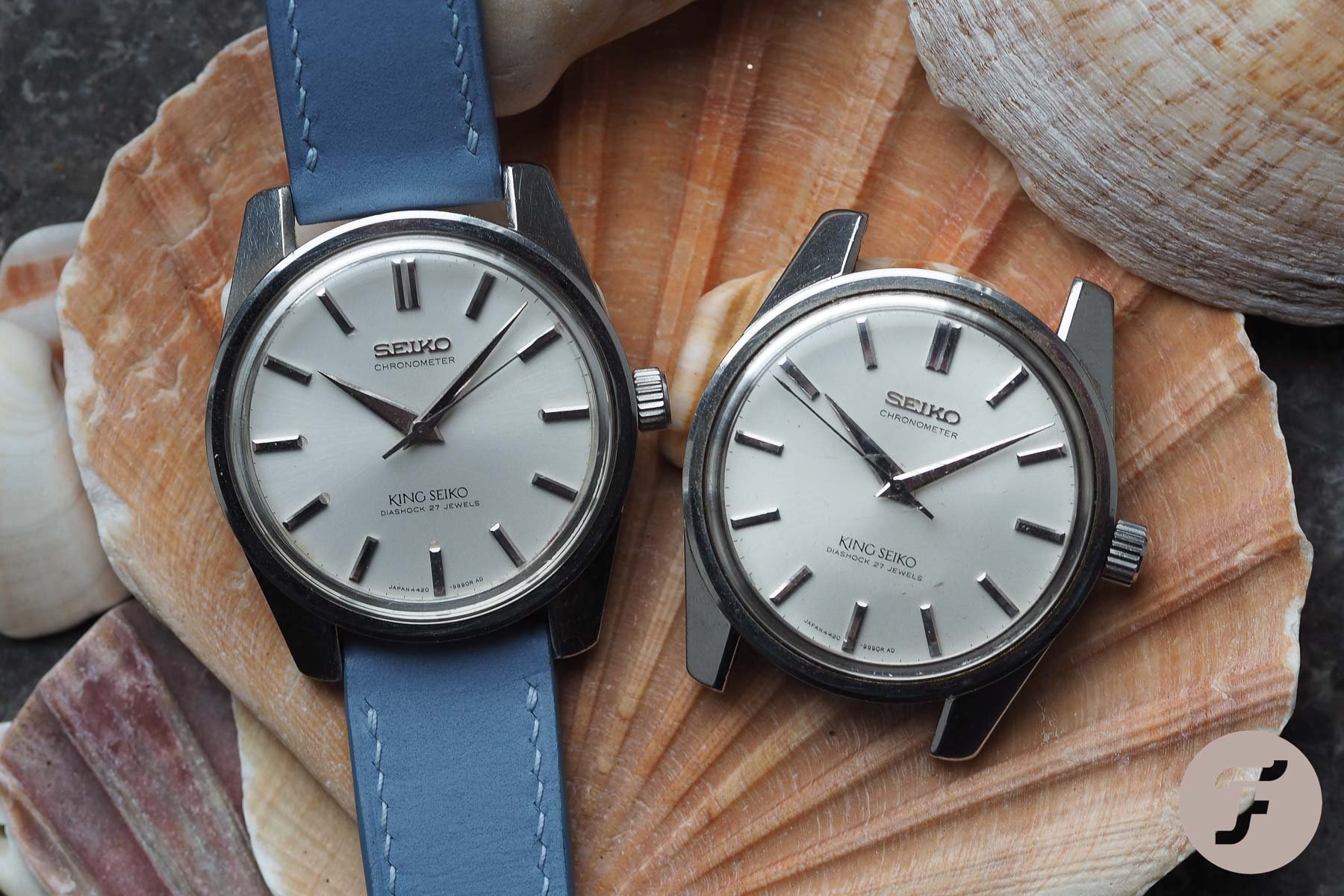
A pair of King Seiko 4420-9990s. The model on the left will likely receive the dial from the example on the right.
Bringing two watches together to make one
We’ll never know the past lives of most vintage watches we own. I originally started my search for a King Seiko 4420-9990 by trying to find a really nice example. I thought I had scored when I landed the model you see on the left. It has a stunning case, case back, and runs like a champ. I bought it in Japan, and despite the typical overexposed photos, all seemed well until it arrived. It seems that an overzealous watchmaker decided to apply some sort of adhesive to most of the back sides of each index via the back of the dial. The result is that there are some globs of clear glue showing on the front of the dial. Despite my deep breaths and a promise to live with it, I simply couldn’t.
The hunt was on for an inexpensive rough-and-ready donor with a nice dial. I managed to find one, but the problem is that it’s almost too nice to deconstruct! In the end, though, the watch on the right will likely sacrifice its dial to the watch on the left and even some other parts to an incoming vintage 44GS that isn’t running. I say that because the donor no longer has a hacking lever, the crystal is shot, and it has a Grand Seiko crown. So, at some point, I will ask Mr. James Marien to perform the transplant.
Wearing the King
The King Seiko 4420-9990 cuts a dashing figure on the wrist. Due to its size, case design, and bezel-to-dial ratio, the watch looks quite large. Also, Seiko used a relatively tall, flat acrylic crystal with angled sides. Still, the thickness is reasonable at roughly 11mm. Normally, a watch like this would have shipped with a black leather or reptile strap and a signed stainless pin buckle. To give watches like this some life and make them more suitable for daily wear, I enjoy pairing them with something a bit brighter. Balazs was kind enough to gift me a lovely chalky light blue 18mm strap from Delugs of Singapore, and I think it looks great!
Shopping for this watch will likely take you to Japan
The King Seiko 4420-9990 was in production for roughly two years, which isn’t a long time. Another hurdle in finding one is that it was strictly a JDM piece. Nonetheless, a visit to the most popular Japanese online auction site will normally reveal several for sale. Combing through auction listings in Japan is a trip. Too much lighting, not enough lighting, and descriptions that overstate or understate the condition are par for the course, so diligence and a bit of luck are required. As you can see, I was bitten!
As always, when it comes to a high-end vintage Seiko, the little details are what make the watch special. Therefore, avoid cases with soft edges and dials with staining (or adhesive oozing from the indices!). On this model, in particular, note that items like crowns and original crystals are expensive. If you find a decent one, expect to pay somewhere around €1,000–1,400. For a chronometer-spec vintage watch, that feels like a relative bargain!
Summing it up
The King Seiko 4420-9990 is one of my favorites within the genre of ’60s King and Grand Seiko models. The case is an early take on the “Grammar of Design” philosophy that would come full circle with models like the 44GS and 62GS. The movement, on the other hand, is a full-fat gem, and it’s nice to know that it can be purchased in such an attractive package for so little money. Stay tuned for more articles on these lovely vintage watches from Japan!

